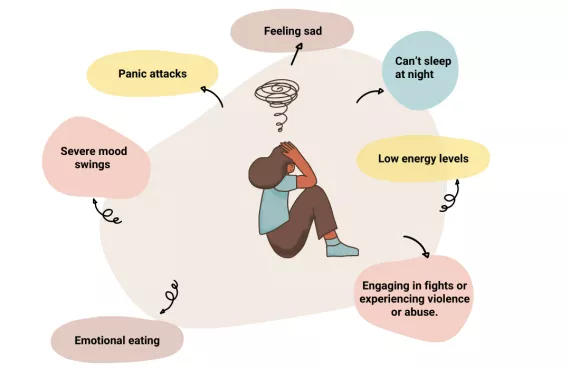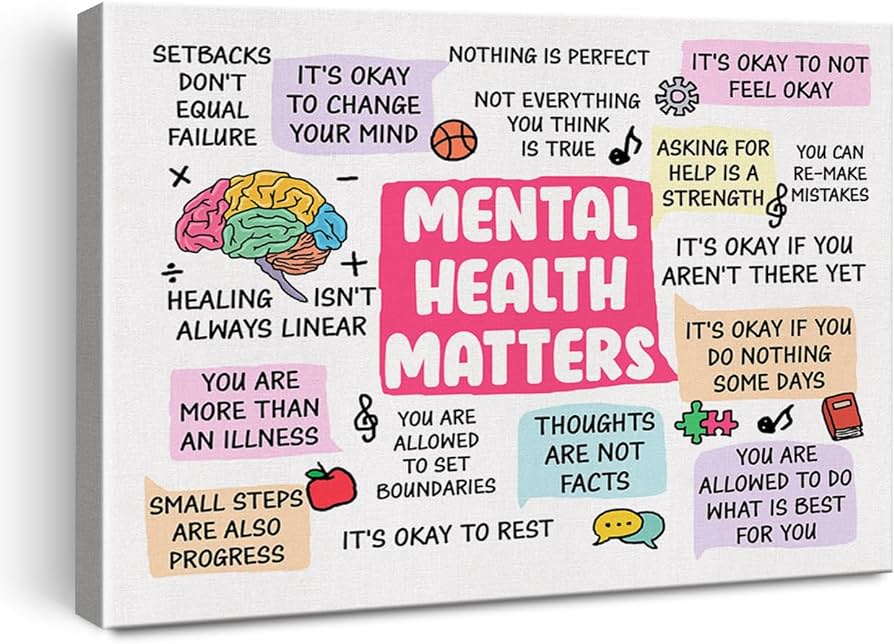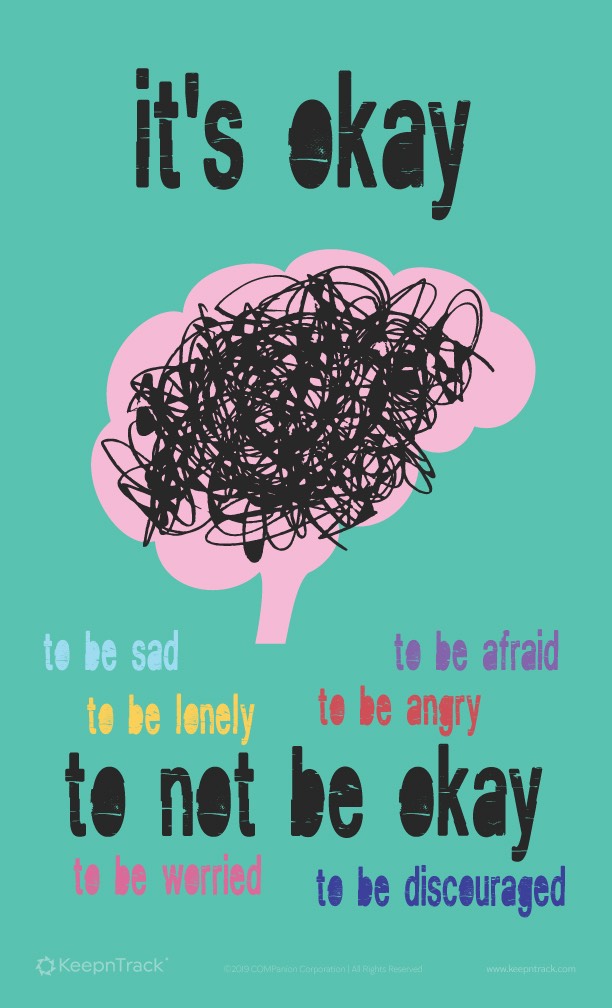Title: The Importance of Mental Health Awareness on College Campuses
Introduction
Many people have the impression that college is an exciting time of personal development, limitless possibilities, and excitement. Beneath this optimistic exterior, however, comes an unpleasant reality: a lot of college students struggle with serious mental health issues at this crucial stage of their life. A plethora of stresses arise with the shift to college life, from the goal of independence to social expectations and scholastic constraints. While navigating these life-changing experiences, students frequently struggle with stress, anxiety, despair, and a host of additional mental health problems.
In this article, We will discuss how important it is to raise awareness of mental health issues on college campuses. We will get insight into the frequency of mental health issues among students and clarify methods for promoting mental health. Main goal is to establish a conducive learning environment where college students may flourish intellectually, socially, and emotionally by recognizing the complexity of student mental health and pushing for preventative measures.

The complex and multidimensional mental health scene on college campuses reflects the range of difficulties that individuals confront throughout this developmental stage. According to recent research, a concerning number of college students suffer from mental health illnesses, with many exhibiting signs of anxiety, sadness, and other associated conditions. Students mental health suffers as a result of their unwavering pursuit of academic success as well as the difficulties of forming personal identities and managing social connections. Furthermore, the issue is complicated by other pressures including lack of services for mental health treatment, homesickness, financial limitations, and drug addiction. It is critical to acknowledge the frequency of mental health issues among college students. Universities may successfully address these complicated concerns by taking proactive measures to recognize their impact on student achievement and well-being. It is crucial to foster a welcoming atmosphere that values mental health awareness and provides easily available tools and solutions. Colleges may enable students to manage the rigors of college life while building resilience and advancing overall well-being by doing this.
Barriers to Seeking Help:
Even though mental health problems are common on college campuses, many students face obstacles that keep them from getting the care they need. For people in need of mental health support, these barriers-which are deeply rooted in the university setting-present serious difficulties.The ongoing stigma associated with mental illness is one of these obstacles. Students continue to feel humiliated or embarrassed about asking for help because of the persistent societal stigma, even in spite of expanded awareness campaigns. Students are frequently discouraged from freely sharing their mental health difficulties due to fear of being judged by peers, instructors, or family members. Additionally, youngsters frequently aren’t aware of the resources that are out there. Even while counseling facilities and other support resources are available, a lot of students might not know where to look or even that they even exist. Students may be discouraged from asking for help due to this lack of understanding as well as emotions of uncertainty and loneliness.
Concerns about confidentiality can contribute to the inhibition of help-seeking activities. Students may hesitate or decide not to ask for aid at all out of concern that doing so may violate their right to privacy. Experiences of prejudice or stigma may intensify this concern, further eroding confidence in mental health treatment.
Students’ access to care is further hampered by structural hurdles including lengthy wait periods for counseling services and a shortage of appointments. If help is not sought out in a timely manner, mental health problems may worsen uncontrolled. Furthermore, the lack of financing for mental health programs puts a pressure on available resources, making counseling institutions unable to accommodate the increasing number of people seeking help.Educational institutions need to provide a friendly environment where students can look for for help without fear of discrimination or rejection in order to remove these barriers. Demeaning mental illness, highlighting the significance of mental health to overall student well-being, and increasing awareness of the resources that are available are all necessary to ensure that every student has access to the support they need to achieve.
Promoting Mental Health Awareness:
Raising mental health awareness is necessary to foster a culture at educational institutions that places a high priority on the welfare of their students. Universities and colleges need to take the lead in eliminating discrimination, giving people access to services for help, and raising public awareness of mental health issues. Organizations may accomplish this by organizing a variety of events for the entire campus, as well as lectures and seminars on coping strategies, self-care, stress management, and resilience. These events provide forums for candid conversation and education, empowering students to recognize the importance of mental health and seek assistance when needed.
Additionally, by include mental health education in the curriculum, young ones can gain important coping mechanisms and a greater comprehension of mental health concerns. Colleges can grow a mental health literacy culture and advance destigmatization by integrating mental health themes into curricula across disciplinary boundaries.
Educating teachers and staff to see distress signals and know how to handle them is another essential step in promoting the wellbeing of students. Support is made sure to be easily accessible by providing instructors and staff with the means to recognize pupils who require assistance.
Furthermore, encouraging peer support initiatives helps students feel like they belong and form a feeling of community. Peer support programs give students the ability to connect with others who may be experiencing similar challenges, creating a support system where they feel valued, heard, and comprehended.
By implementing these strategies, colleges and universities can encourage a culture where mental health is recognized, stigma is reduced, and students feel empowered to obtain the support they need to achieve academically, socially, and emotionally.
Access to Mental Health Resources
Ensuring that college students have access to mental health resources is essential to meeting their varied range of needs. To successfully fulfill the rising need for mental health assistance, institutions must prioritize expenditures in comprehensive counseling services, psychiatric treatment, crisis intervention, and peer support programs.
To handle the growing number of youngsters requesting assistance, the counseling center must hire more staff members. In order to provide prompt access to treatment, it is also essential to minimize wait times for appointments. By providing flexible appointment scheduling choices, you can support accessibility to mental health services while also accommodating students’ varied schedules.
It is important to provide students who might want assistance outside of regular office hours with after-hours support services. This ensures that students have access to help when they need it most, especially during difficult or crisis situations.
Utilizing technology can also expand the availability and efficacy of resources for mental health. Students may now get counseling services remotely thanks to teletherapy systems, which eliminate obstacles like geographic distance and transportation problems. In addition to traditional peer-to-peer connections, online support groups and mental health applications give students access to self-help tools and helpful coping mechanisms.
Colleges and universities may provide a supportive atmosphere where students have fair access to the mental health services they require to succeed by putting these strategies into practice. Addressing the mental health needs of college students and fostering general well-being requires prioritizing service growth, lowering access obstacles, and adopting cutting-edge technology.
Conclusion
College students mental health is an urgent problem that has to be addressed, and everyone involved must take action. Colleges and universities can create a culture on campus where mental health is prioritized by increasing mental health awareness, reducing stigma, and ensuring that students have access to services for help. Students, instructors, staff, administrators, and community partners must work together to address the mental health needs of college students and provide a supportive atmosphere where all students may thrive academically, socially, and emotionally. It’s critical to prioritize mental health on college campuses, and we should allow students to freely get help when they need it.




































